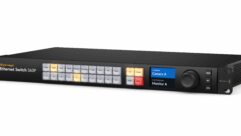U.S. FTTH Connections Continue to Accelerate
Apr 11, 2007 8:00 AM
Click here for more news on Cables from The Briefing Room
The number of U.S. homes receiving video, Internet, and voice services over direct fiber-optic connections has doubled over the past year, reveals a new report sponsored by the Fiber-to-the-Home (FTTH) Council and the Telecommunications Industry Association.
According to the study, 1.34 million homes are now connected to the Internet via end-to-end fiber, with fiber now passing 7.9 million homes. This compares to 671,000 connections and 4.1 million homes passed as of March 2006.
Further, the study shows that FTTH is being installed by a range of incumbent and competitive providers, not just large telephone companies. Accounting for more than 430,000 FTTH subscribers are small rural telephone companies, medium-sized telephone service providers and cable companies, private facilities-based competitive local exchange carriers, and public entities such as municipalities and public utilities.
“While Verizon is by far the largest single provider of fiber-to-the-home services, our figures show that there are more than 340 companies serving customers with these ultra-high-bandwidth services,” says Mike Render of RVA Market Research, author of the study. “In fact, small rural telephone companies are actually leading the way in terms of penetration—with three percent of their combined customer base now connected via fiber-to-the-home.”
Render noted that while the United States continues to lag behind Japan in the total number of homes connected to FTTH, it has taken a commanding lead in terms of the growth rate in direct fiber-optic connections.










